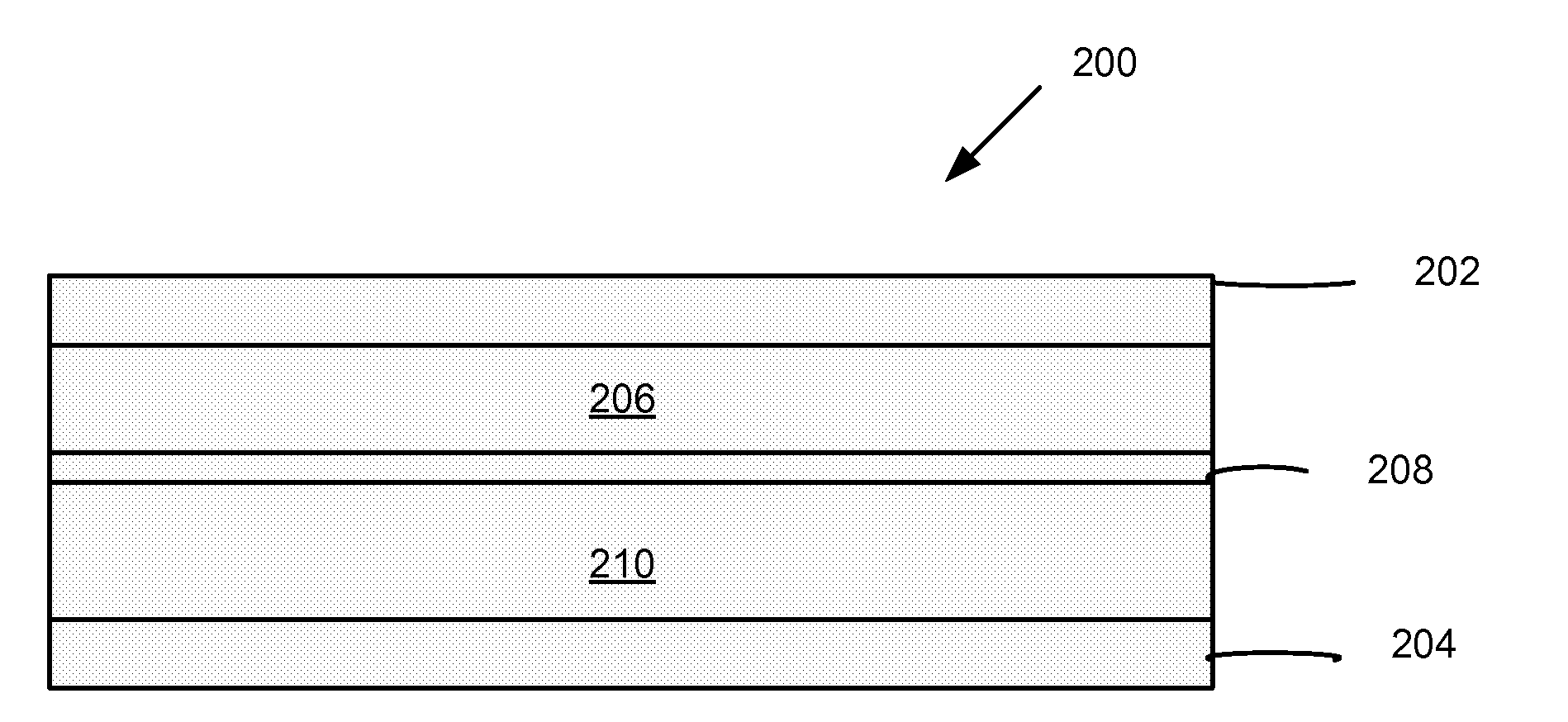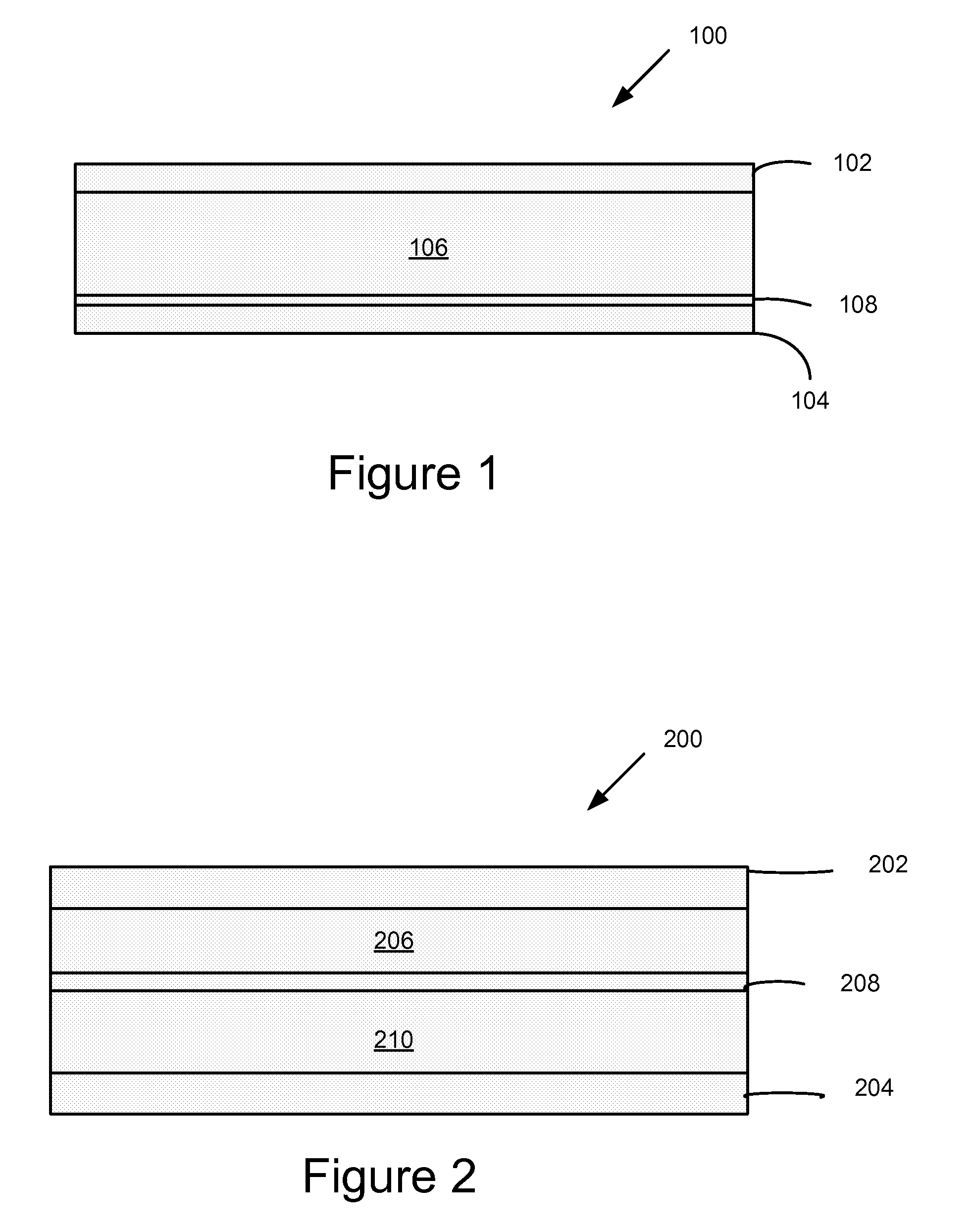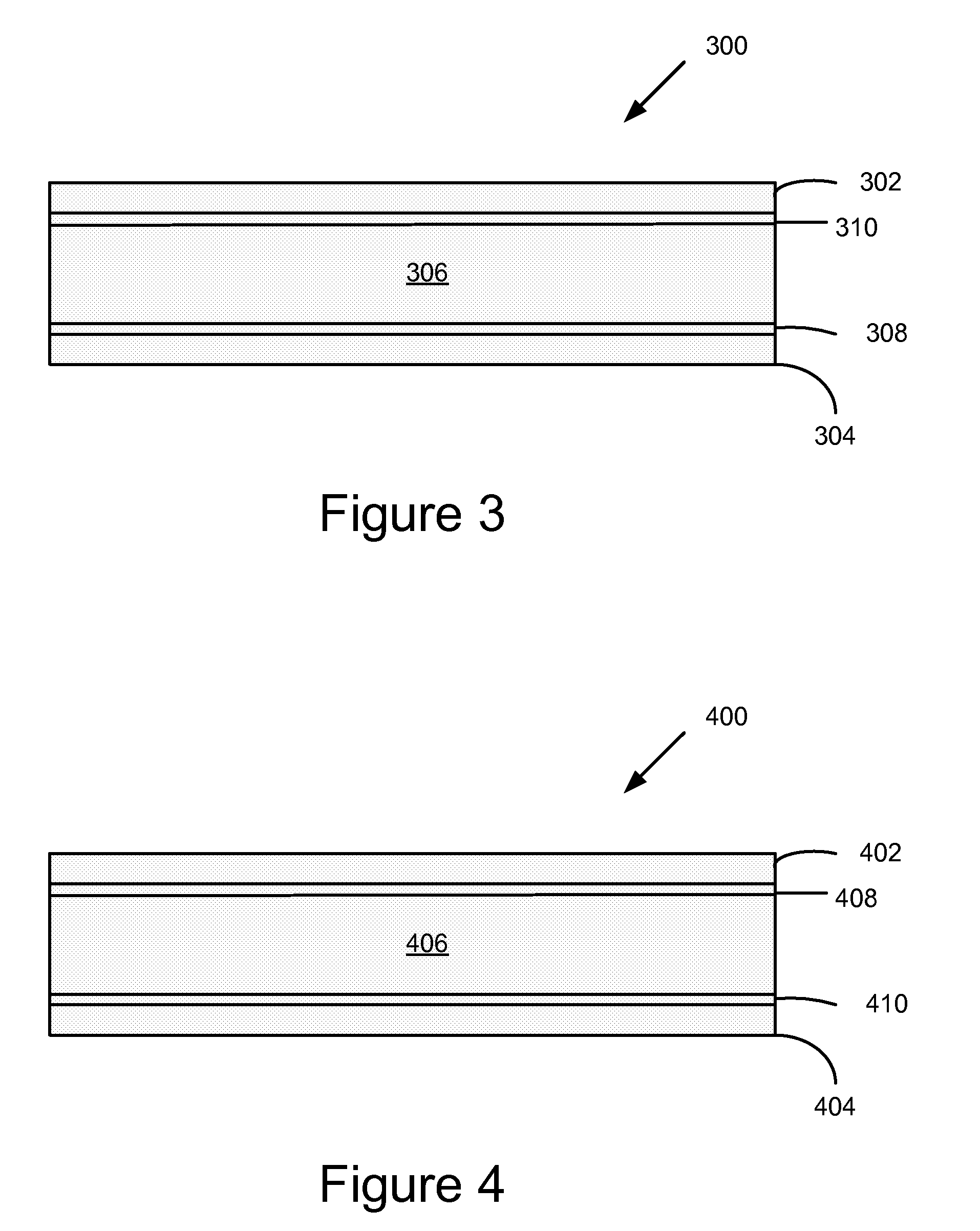Solution processable material for electronic and electro-optic applications
- Summary
- Abstract
- Description
- Claims
- Application Information
AI Technical Summary
Benefits of technology
Problems solved by technology
Method used
Image
Examples
examples
[0044]According to an embodiment of the current invention, we provide a method to make efficient organic electronic devices by utilizing a mixture of solution processable semiconducting metal oxides and salts to form functional interfacial layers in polymer electronics. One example is an anatase TiO2 and Cs2CO3 blend. Introducing a nano-scale TiO2 and Cs2CO3 interfacial layer can provide solar cell performance as good as a device with a low work-function metal Ca as an electrode which is easy to be oxidized (Greczynski, G.; Kugler, T.; Keil, M.; Osikowicz, W.; Fahlman, M.; Salaneck, W. R. J. Electron Spectrosc. Relat. Phenom. 2001, 121, 1). The effectiveness of this unique approach is expanded to polymer LEDs in other particular embodiments of this invention where a lower driving voltage, improved efficiency and extended lifetime are again demonstrated.
[0045]Semiconducting TiO2 has been extensively studied as a promising material in a variety of applications including dye-sensitized...
PUM
| Property | Measurement | Unit |
|---|---|---|
| Electrical conductivity | aaaaa | aaaaa |
| Volume | aaaaa | aaaaa |
| Ratio | aaaaa | aaaaa |
Abstract
Description
Claims
Application Information
 Login to View More
Login to View More - R&D
- Intellectual Property
- Life Sciences
- Materials
- Tech Scout
- Unparalleled Data Quality
- Higher Quality Content
- 60% Fewer Hallucinations
Browse by: Latest US Patents, China's latest patents, Technical Efficacy Thesaurus, Application Domain, Technology Topic, Popular Technical Reports.
© 2025 PatSnap. All rights reserved.Legal|Privacy policy|Modern Slavery Act Transparency Statement|Sitemap|About US| Contact US: help@patsnap.com



